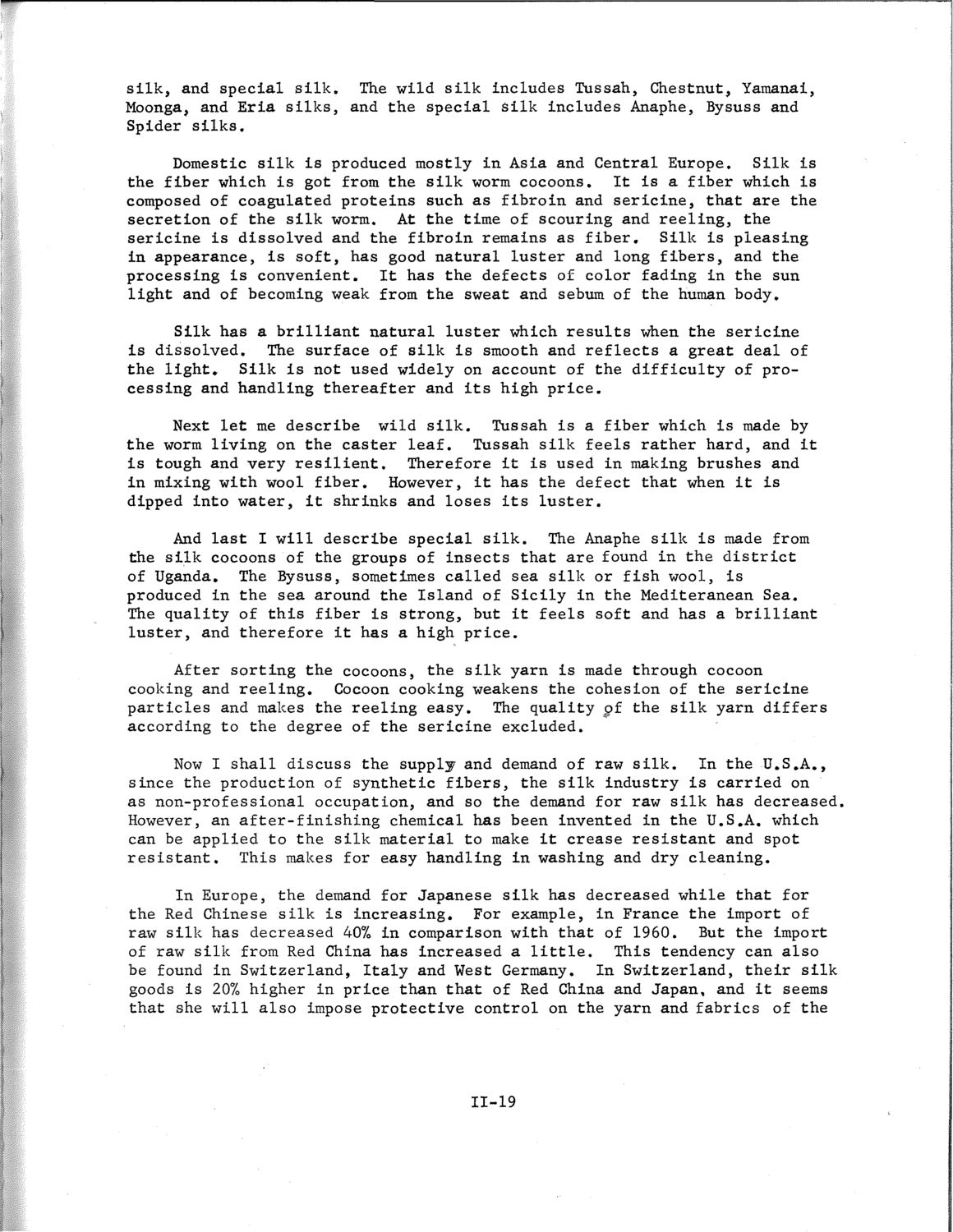| |
| |
Caption: SWE - Proceedings of the First International Conference of Women Engineers and Scientists
This is a reduced-resolution page image for fast online browsing.

EXTRACTED TEXT FROM PAGE:
silk, and special silk. The wild silk includes Tussah, Chestnut, Yamanai, Moonga, and Eria silks, and the special silk includes Anaphe, Bysuss and Spider silks. Domestic silk is produced mostly in Asia and Central Europe. Silk is the fiber which is got from the silk worm cocoons. It is a fiber which is composed of coagulated proteins such as fibroin and sericine, that are the secretion of the silk worm. At the time of scouring and reeling, the sericine is dissolved and the fibroin remains as fiber. Silk is pleasing in appearance, is soft, has good natural luster and long fibers, and the processing is convenient. It has the defects of color fading in the sun light and of becoming weak from the sweat and sebum of the human body. Silk has a brilliant natural luster which results when the sericine is dissolved. The surface of silk is smooth and reflects a great deal of the light. Silk is not used widely on account of the difficulty of processing and handling thereafter and its high price. Next let me describe wild silk. Tussah is a fiber which is made by the worm living on the caster leaf. Tussah silk feels rather hard, and it is tough and very resilient. Therefore it is used in making brushes and in mixing with wool fiber. However, it has the defect that when it is dipped into water, it shrinks and loses its luster. And last I will describe special silk. The Anaphe silk is made from the silk cocoons of the groups of insects that are found in the district of Uganda. The Bysuss, sometimes called sea silk or fish wool, is produced in the sea around the Island of Sicily in the Mediteranean Sea. The quality of this fiber is strong, but it feels soft and has a brilliant luster, and therefore it has a high price. After sorting the cocoons, the silk yarn is made through cocoon cooking and reeling. Cocoon cooking weakens the cohesion of the sericine particles and makes the reeling easy. The quality <p£ the silk yarn differs according to the degree of the sericine excluded. Now I shall discuss the supply/ and demand of raw silk. In the U.S.A., since the production of synthetic fibers, the silk industry is carried on as non-professional occupation, and so the demand for raw silk has decreased. However, an after-finishing chemical has been invented in the U.S.A. which can be applied to the silk material to make it crease resistant and spot resistant. This makes for easy handling in washing and dry cleaning. In Europe, the demand for Japanese silk has decreased while that for the Red Chinese silk is increasing. For example, in France the import of raw silk has decreased 407o in comparison with that of 1960. But the import of raw silk from Red China has increased a little. This tendency can also be found in Switzerland, Italy and West Germany. In Switzerland, their silk goods is 20% higher in price than that of Red China and Japan, and it seems that she will also impose protective control on the yarn and fabrics of the 11-19
| |